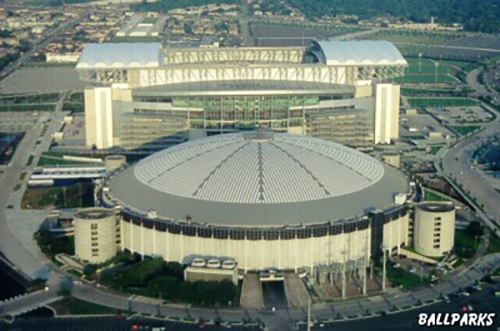Harris County judge Ed Emmett seemingly has a good deal of power in the Houston area. That’s relevant, because he “absolutely opposes” demolishing the AstroDome, which basically hasn’t been consistently used in years. People have been discussing the fate of the AstroDome seemingly forever, and it admittedly is on the National Register of Historic Places.
There’s a new plan in play — from Emmett — that basically aims to turn the AstroDome into the world’s largest indoor garden. That theoretically doesn’t mean a lot, since most gardens are outdoors, but it’s a very Texas-type thing to say (and could help with tourism, although I feel like most tourism to Houston is likely business travel at this point). Whether it can actually happen is largely based on the details (of course), but if it’s not getting torn down anytime soon and it’s not really hosting that much, you could do worse than putting a series of beautiful flowers inside it for people to walk around.
I lived in Houston from 2003 to 2005, and then a bit last summer (2013) too. When I first moved there, it was the second season of the Texans (who play at Reliant), and Enron / Minute Maid was open too, so the AstroDome was already kind of an after-thought. I still went and drove by it and even parked in the (empty) lot and walked around a bit; it’s a major stadium and there is a lot of history there — remember the Nolan Ryan and Mike Scott Astros teams? — so I understand why there’s resistance to smashing it down.
Interesting parallel in that CityLab article linked above: the High Line in NYC. Here’s how that went down, as they explain it:
The proposal to turn the High Line into the urban park that it is today didn’t emerge fully formed from a planner’s head. Instead, two Chelsea residents, Joshua David and Robert Hammond, tossed around the idea of doing something with the expired piece of infrastructure in community meetings long enough that they won over some influential friends—namely, Diane von Furstenberg and her husband, Barry Diller.
The nonprofit Friends of the High Line then launched an “ideas” competition, which is a crafty way to get a lot of architects to work for you for virtually nothing. (Seriously: The contest garnered 720 entries, from which a jury picked 4 winners, who got cash, plus 3 awards, 11 honorable mentions, and 65 jury prizes—none of which turned into the design for the High Line.) The buzz about the High Line Park helped its founders to raise more than $150 million, three times what New York City gave for the project.
This is a pretty interesting topic — cities build things and the infrastructure of the city eventually shifts, and those things become irrelevant. But they’re not truly irrelevant because memories and context with them exist, and it’s also possible that they cost enough to build that people don’t really want to rip them down or anything immediately. You see this all the time with cities that hosted the Olympics — things are built at costs of millions, and then the places become ghost towns.
The conversion of old infrastructure to present value-add is something you’re gonna start seeing a lot more of, especially if highways and the like start getting re-routed in certain parts of the country. The AstroDome is an interesting example — large garden would be cool, and some other projects could also be interesting. But it has to become something. It can’t just sit there. Right?
